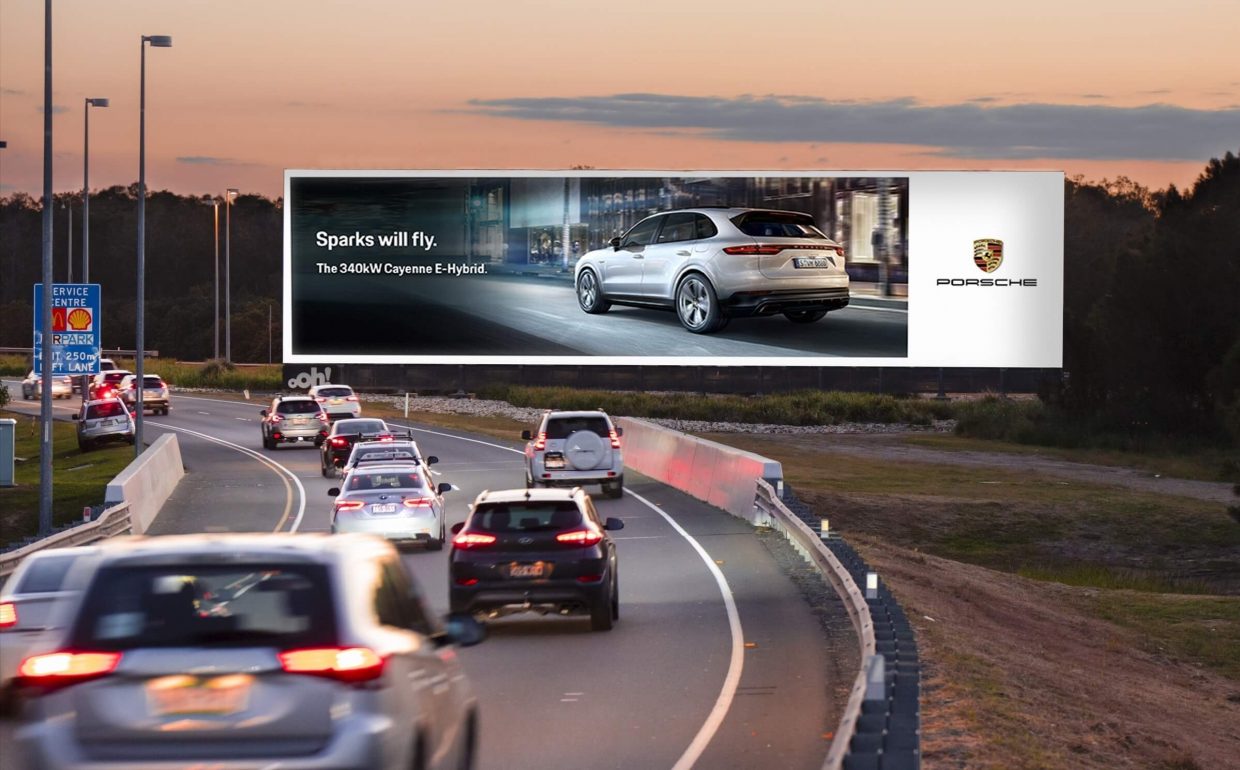IT’S NOT THE SIZE OF THE REACH, IT’S HOW YOU USE IT

Professor Byron Sharp may have recently broken the adland internet reinforcing the importance of reach and mental availability, but POLY’s Josh Gurgiel insists that capturing the attention of consumers is every bit as important as reaching them, especially when on the move.
By Josh Gurgeil, originally published in AdNews.
I have a confession to make. My name is not Josh Gurgiel. Well, not entirely. My full name is Joshua Mordechai Gurgiel. As such, my dad has called me “Morty” for most of my life. So you can imagine my elation in 2019 when oOh!media launched one of their largest digital billboards at Brisbane Airport and named it “Big Morty”. You know you’ve made it when you’re featured on a billboard, let alone had one named after you! And when it comes to making brands bigger, it doesn’t get much bigger than Out of Home – essentially the biggest of all media formats. But, when it comes to building brands, it’s not the size of the format, it’s how you use it.
Using OOH to truly make brands bigger?
First, we must understand what “bigger” means. To do so, we don’t need to look much further than Adelaide hometown hero, Professor Byron Sharp. Sharp essentially defines this as capturing more “mental availability” of potential consumers, ensuring a brand is more familiar and readily available when consumers look to take a future action. According to Sharp, brands can capture this mental availability by reaching as many light category buyers as often as possible over a long period of time. Out of Home is damn good at reaching as many light category users as often as possible over a long period of time. It’s essentially everywhere.
oOh!’s ‘Big Morty’ at Brisbane Airport
But when it comes to making a brand bigger in the minds of consumers, reach is only half of the equation. If nobody notices what is being said, then how effective is the reach in capturing mental availability? A robust global market mix modelling study by Analytic Partners in 2019 found that 41% of the ROI generated by OOH advertising is due to the creative run. That means almost half of what makes Out of Home so effective at building brands is the impact of the creative and its ability to generate the buzzword of 2022 … attention.
At POLY, the content and creative innovation hub of oOh!media, we’re obsessed with capturing consumers’ attention on the move. But we know that consumers are extremely busy and don’t care about advertising nearly as much as we do. So, here are three creative tricks to get consumers to take more notice of OOH ads.
Full Motion
Out of Home does not necessarily mean outside. The majority of OOH environments are actually indoors. Retail centres, train stations, airports, cafes, venues, offices and universities. This is important because any screen that has a roof over it can run full motion creative. In fact, there are even a handful of high-pedestrian roadside sites that also house full motion and even 3D anamorphic creative. Studies have shown that full motion creative delivers 2.5 times more memory encoding than static (Ocean Outdoor, 2019); it’s more noticeable, more engaging, and can easily serve as an extension of existing social creative. Very few advertisers are thinking of their OOH spend as an extension of their screen or social strategies, but they should be if they want to capture more attention on the move.
Contextual Relevance
The beauty of OOH is it is naturally integrated into consumers lives. It cannot be skipped, blocked or switched off, which is half the battle for advertisers trying to capture mental availability. It also offers brands the ability to be contextual in and around their chosen environments. Whether this be aligning with weather, time of day or traffic conditions, making creative contextually relevant leverages the power of OOH as a location-based medium that captures audiences on the move. It is proven to improve engagement by up to 19% (Own The Journey, 2017). In a continual battle for consumers’ attention, brands need to offer consumers more reasons to remember them.
Utility
The relationship between advertiser and consumer is a fundamental value exchange. Consumers offer brands their attention in exchange for the promise of future value delivered. But advertisers can also offer more immediate value and build greater brand equity by building a sense of utility into their communications. For example: Uber including wait times in their creative at Melbourne airport, or Cadbury creative directing consumers to nearby supermarkets; if a brand offers practical benefits to consumers’ lives, then make sure the OOH creative delivers that brand promise, references physical availability and builds goodwill, at scale.
Ultimately, brands need to have fun with OOH. With the ability to reach light category buyers anywhere, at any time, irrespective of media consumption habits, brands should seek to understand and leverage those simple human elements. This will make consumers divert their attention from their busy lives, if only for a few seconds, and take in a brand message. Brands don’t necessarily need ‘Big Morty’ to secure big memory.